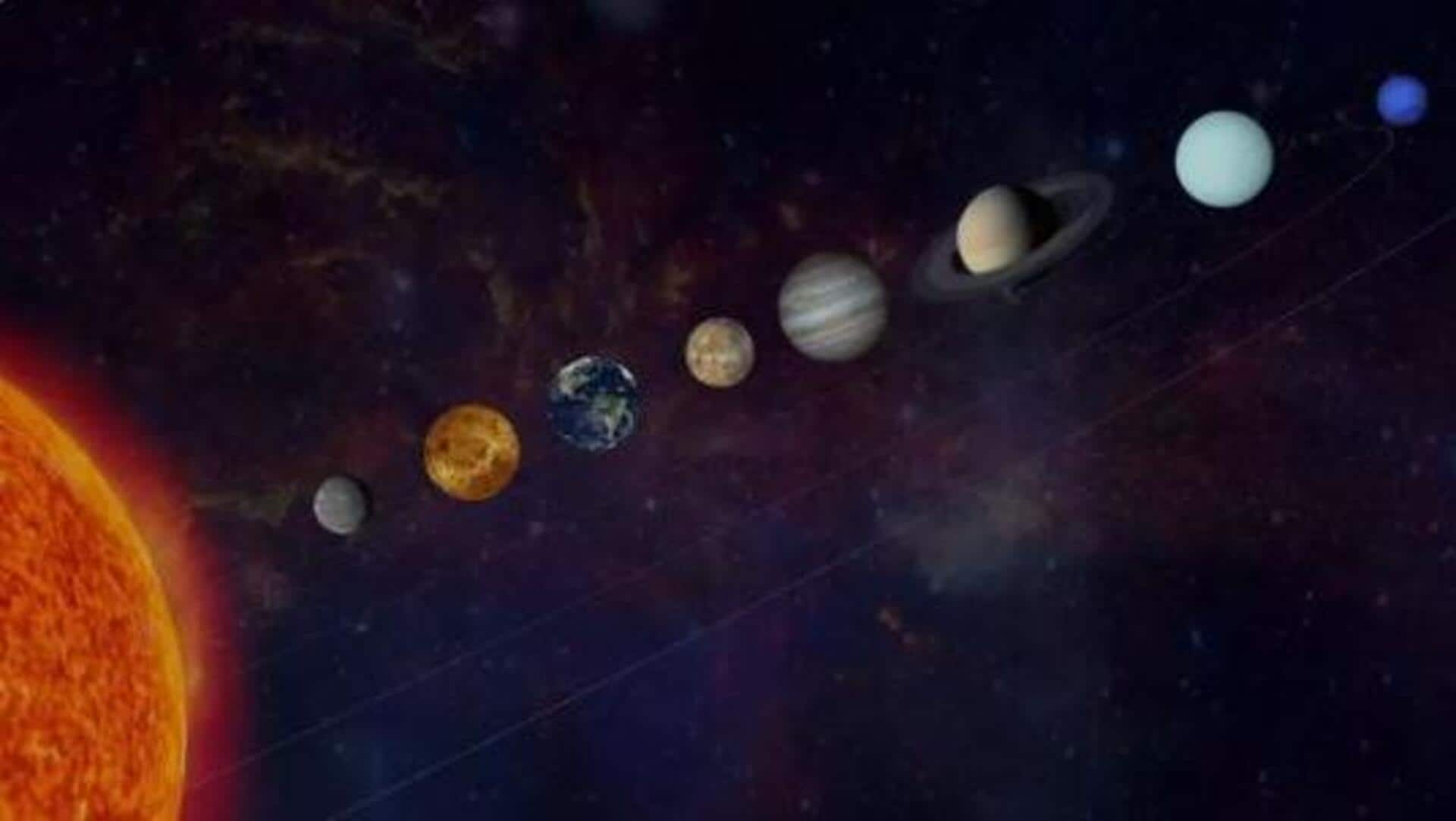
Maha Kumbh to end with all planets visible from India
What's the story
The Maha Kumbh 2025, India's biggest spiritual event, will conclude with an unprecedented celestial phenomenon.
All seven planets of our solar system—Mercury, Venus, Mars, Jupiter, Saturn, Uranus, and Neptune—will be visible from Earth.
The rare astronomical phenomenon started in January and will peak on February 28 when Mercury joins the lineup.
This phenomenon won't happen again until 2040.
Celestial phenomenon
Planetary alignment: A unique spectacle
Although the term "planetary alignment" is commonly used to describe such events, it doesn't have a strict scientific definition.
It usually refers to the visibility of multiple planets at the same time in the night sky.
These celestial bodies will appear along the ecliptic—the path traced by the Sun across the sky—because their orbits are roughly in the same plane.
Twitter Post
One of the rarest astronomical events: IMD
25th January 2025
— India Meteorological Department (@Indiametdept) January 25, 2025
As per the configuration of the planetary system and different revolution periods of planets, it is rare to have all planets in a single frame of the sky. In January to February 2025 we can see the planets Jupiter and Mars on eastern sky, Saturn and Venus in… pic.twitter.com/G0AJnOXRjP
Viewing guide
Observing the celestial alignment
During this planetary parade, observers can expect to see five planets without any optical aid: Mercury, Venus, Mars, Jupiter, and Saturn.
However, Uranus and Neptune will require binoculars or telescopes for viewing due to their faintness.
The best times for observation will be during twilight hours after sunset or before sunrise when the planets are positioned higher in the sky.
Astronomical forecast
Future opportunities to witness similar celestial alignment
Astronomers predict mid-August 2025 will provide another opportunity to witness a similar spectacle with six planets visible in the morning sky.
While Uranus and Neptune can be difficult to spot with the naked eye, they can still be located with good conditions and equipment.
The festival takes place every four years in Haridwar, Ujjain, and Nashik, and every 12 years in Prayagraj.